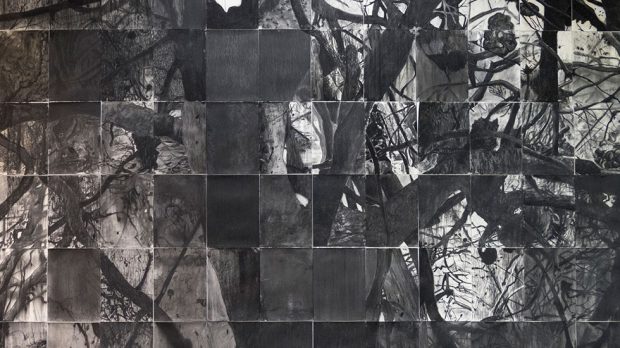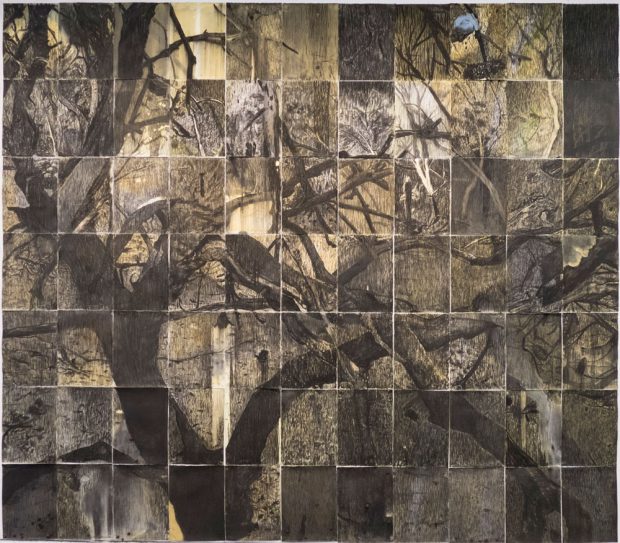
Described as a “panoramic vision of loss, repair and retrieval” Looking Glass is the immersive new work from WA artist Gregory Pryor. Looking Glass is in many ways a reassembled landscape of 1585 sheets of paper, evocative of a visit to the devastated terrain of the 2015 Esperance bush fires. The work of Pryor and a team of student assistance, Looking Glass melds multiple mediums into something that captures the fragmentary nature of many of the isolated landscapes of WA. DAVID O’CONNELL spoke to the artist, writer and academic about his inspiration and appeal of the Australian landscape.
What inspired you to create Looking Glass?
The sources of inspiration are diverse and stretch out over time – as an experienced artist, it is rarely a single event/observation/thought, but rather a series of overlapping elements that conjoin into the exhibition. Some of these overlapping elements are: The landscapes of the Yilgarn Craton in Western Australia, The Sala dei Giganti frescoes by Giulio Romano in the Palazzo Te in Mantua, Italy, the enduring culture of Aboriginal Australians that is embedded in the land and the paintings of Paul Cezanne.
What themes are represented within the work?
Death, renewal, restoration.
I believe there is quite a scale to Looking Glass, what prompted the decision to work in such a large scale?
The physical, conceptual and cultural scale of Western Australia is so immense; it needs a commensurate response to alert viewers to these elements. The physical characteristics of Gallery 4 (called the WA Now space) at the Art Gallery of Western Australia is also suited to such a work with it’s high ceilings and polygonal shape.
What mediums are involved in Looking Glass?
Watercolour, charcoal, glass and Balga resin on paper.
Why did you go for the mixed medium approach? Did it afford you a specific opportunity you were able to exploit?
The material language of an artwork, can tell just as much of a story, or create as much conceptual depth to a work as the content of the composition. In this work, it was important that wet and dry media, transparent and opaque elements were juxtaposed. This co-mingling of opposites creates a tactile tension to the work that animates it for the viewer.
How much of a consideration was lighting, due to the thousands of glass beads used in the work?
There are always limitations with lighting in galleries, but the nature of glass is that it will pick up any light and hold a reflection of it – I was happy to work with this.
Just to give a background to how much work was involved in Looking Glass, how many man-hours were involved in the finished product?
ummm….How long is a piece of string? Quite a few.
What is it about a landscape that attracts you to it as a subject?
It is alive and constantly changing. It is not a still life. Our relationship to it and here, in this part of the world, how the First Australians managed it for so long and developed such a complex cultural and spiritual relationship to it. And I am fascinated with how the plants have adapted over millennia to survive in such a climate and such ‘poor’ soils.
What can audiences expect from the free Artist Talk on the 9th?
Further extrapolation of some of these answers and an artist who is happy to be able to deliver a work that is still revealing itself to him.
Looking Glass will be on display at the WA Now space of AGWA from Saturday 2 September through to 26 February 2018. Gregory Pryor will also give a free Artist Talk about his display, 2-3pm Saturday 9 September.
